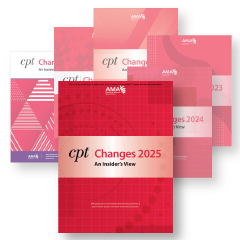by Find-A-Code™
Apr 19th, 2024
If you are just getting started in your career as a medical coding or billing specialist, you may be confused as to why there are so many code sets to work with. There are several reasons, but the overarching reason that trumps all others is this: what is required by law. Payers may have their own rules, but in most cases, they must abide by federal law. Another thing to keep in mind is that while medical billing codes are widely adopted, they are not universal.
Two commonly used code sets in the U.S. are the Current Procedural Terminology (CPT) and International Classification of Diseases, Tenth Revision, Clinical Modification (ICD-10) sets. Keeping in mind that there are other code sets (e.g., HCPCS, ICD-10-PCS), it is up to the medical coder and biller, to know which sets to apply when coding a given encounter.
A Standardized Billing Language
At their core, medical billing code sets act as a standardized billing language that keeps all the players on the same page. Different sets are utilized because there are different players trying to communicate different ideas.
The CPT code set was developed by the American Medical Association (AMA) decades ago for the purposes of simplifying billing practices. The AMA continues to maintain the set today. Given that the AMA represents doctors, advanced practice nurses, and other clinicians, their code set is mainly designed to describe the procedures clinicians provide.
On the other hand, ICD-10 codes are the domain of the World Health Organization (WHO) and they have been adapted for use within the United States with a "Clinical Modification" (ICD-10-CM). ICD-10 codes are used to report diagnoses of all sorts of medical maladies, irrespective of the procedures chosen to treat them.
It should be clear that the two code sets describe two distinct categories of things within the healthcare spectrum.
Payers Play a Role, Too
It is easily understood from the CPT and ICD-10 code sets that billing parties play a significant role in influencing medical billing codes. But payers play a role as well. If you don't understand how, look no further than the Centers for Medicare & Medicaid Services (CMS). Medicare and Medicaid are federally subsidized and maintained health insurance programs. Medicare is primarily for senior citizens while Medicaid is for low-income individuals and households.
CMS manages both programs. In order to address discrepancies and differences of opinion regarding procedure codes and their usages, they maintain a code set known as the Healthcare Common Procedure Coding System (HCPCS). While some of these codes are primarly only used on claims reported to CMS, other payers may also use them. Becaue private payers often follow CMS's lead, it is not unusual for private payers to require HCPCS codes for certain procedures.
One thing the HCPCS code set demonstrates is the reality of competing interests. Every organization with its own code set has goals it wants to achieve with that set. But more often than not, those goals are not aligned. CMS aims to accomplish one thing while AMA wants to accomplish something else.
Memorization Isn't Necessary
For someone just embarking on a medical coding or billing career, the sheer number of medical codes can seem daunting. However, there is good news for coders and billers: memorization isn't necessary. Online lookups and paper books provide the information coders and billers need to do their jobs.
It would be nice if all the most widely used code sets could be merged into a single, universal set. But that is neither realistic nor practical. So until a better system comes along, billers and coders need to know their way around the different sets. We can help with up-to-date online medical code lookup. Try our search tool for yourself.


 Quick, Current, Complete - www.findacode.com
Quick, Current, Complete - www.findacode.com